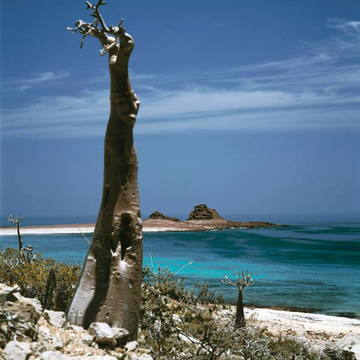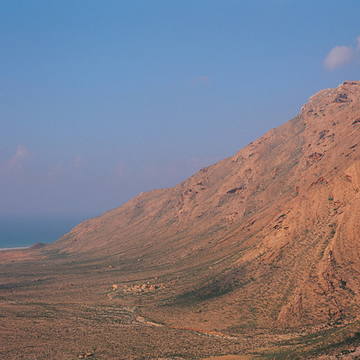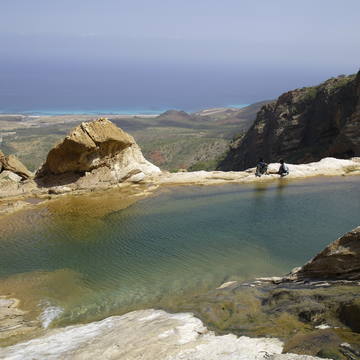Socotra Archipelago
Socotra Archipelago, in the northwest Indian Ocean near the Gulf of Aden, is 250 km long and comprises four islands and two rocky islets which appear as a prolongation of the Horn of Africa. The site is of universal importance because of its biodiversity with rich and distinct flora and fauna: 37% of Socotra’s 825 plant species, 90% of its reptile species and 95% of its land snail species do not occur anywhere else in the world. The site also supports globally significant populations of land and sea birds (192 bird species, 44 of which breed on the islands while 85 are regular migrants), including a number of threatened species. The marine life of Socotra is also very diverse, with 253 species of reef-building corals, 730 species of coastal fish and 300 species of crab, lobster and shrimp.
Outstanding Universal Value
Values
Socotra is globally important for biodiversity conservation because of its exceptionally rich and distinct flora and fauna. 37% of Socotra’s plant species, 90% of its reptile species and 95% of its land snail species do not occur anywhere else in the world. Socotra is of particular importance to the Horn of Africa’s biodiversity hotspot and, as one of the most biodiversity rich and distinct islands in the world, has been termed the “Galápagos of the Indian Ocean”.
Criterion (x): Biological diversity and threatened species: Socotra is globally important for biodiversity conservation because of its exceptional level of biodiversity and endemism in many terrestrial and marine groups of organisms. Socotra is particularly important for its diversity of plants and has 825 plant species of which 307 (37%) are endemic. Socotra has high importance for bird species as underlined by the identification by Birdlife International of 22 Important Bird Areas on Socotra. Socotra also supports globally significant populations of other land and sea birds, including a number of threatened species. Extremely high levels of endemism occur in Socotra’s reptiles (34 species, 90% endemism) and land snails (96 species, 95% endemism). The marine life of Socotra is also very diverse, with 253 species of reef-building corals, 730 species of coastal fish and 300 species of crab, lobster and shrimp, and well represented in the property’s marine areas.
Integrity
The property is of sufficient size to adequately represent all the terrestrial and marine features and processes that are essential for the long term conservation of the archipelago’s rich and distinct biodiversity. The terrestrial nature sanctuaries, national parks and areas of special botanical interest included in the property encompass about 75% of the total land area. They protect all the major vegetation types, areas of high floral and faunal values, and important bird areas. The marine nature sanctuaries included in the property encompass the most important elements of marine biodiversity. The property’s integrity is further enhanced by terrestrial and marine buffer zones that are not part of the inscribed property.
Requirements for Protection and Management
All component areas of the property have legal protection; however there is a need to strengthen the legislative framework, and management and enforcement capacity. Whilst the property’s terrestrial and marine habitats are generally still in good condition, management planning needs to deal more effectively with current threats including roading, overgrazing and overharvesting of terrestrial and marine natural resources. Potential future threats include unsustainable tourism and invasive species. Impacts of these threats on Socotra’s biodiversity need to be closely monitored and minimized. A sustainable financing strategy is required to ensure the necessary human and financial resources for the long term management of the property. Appropriate linkages need to be developed between the management of the property, its buffer zones and the Socotra Biosphere Reserve.
















